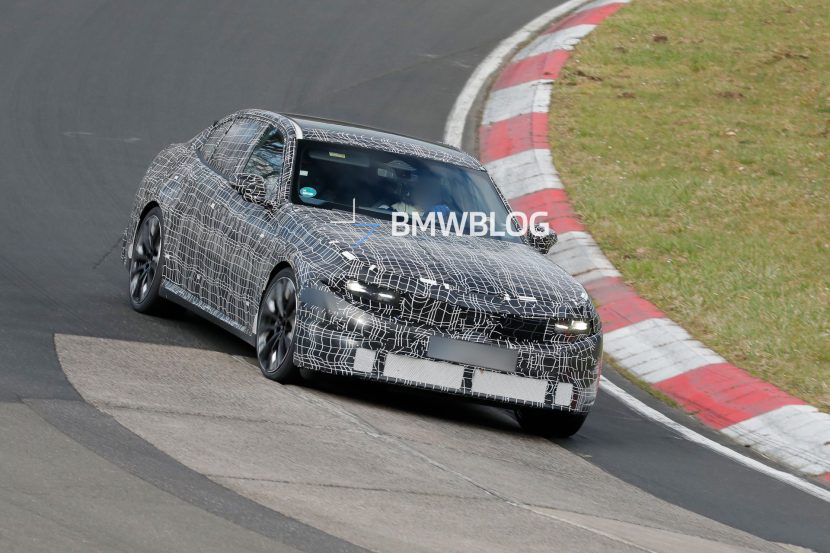Earlier this week, BMW hosted a press event where selected journalists had the opportunity to test drive a pre-production version of the upcoming BMW i3. The i3 electric vehicle will be officially unveiled on July 29th and goes on sale in the United States in early 2014.
The “official spy photos” are still masking some of the last design details, but underneath the light camo we can spot a new grey paint job along with an i3-specific set of wheels that give the car a sporty look. The dimensions of the standard tires (155 / 70 R19) are specific to the BMW i3. We can also distinct full LED headlights.
Just as we have seen before, the glass doors seen on the concept are now gone and replaced by more traditional doors made out of carbon fiber.
With a DIN curb weight of 1,195 kilograms, (2,630 lbs), the BMW i3 is lighter than most compact vehicles, yet offers significantly more space for up to four occupants (US specific weight specifications will be available closer to the US launch). It also has the edge over conventionally powered models of a comparable size and output in the sprints from 0 to 60 mph, which it completes in about seven seconds, and 0 to 35 mph (0-60 km/h) in about 3.5 seconds. Furthermore, extensive road tests conducted as part of project i ensures the car’s range of 80 – 100 miles (130 – 160 km) in everyday conditions is adequate to comfortably meet the day-to-day mobility needs of the target customer group.
PRE-DRIVE: BMW i3
The car’s rear-wheel drive allows the front axle to remain free of torque steer and fulfill its steering function to full effect. As with current models from the BMW and MINI brands, electric power assistance also sends the BMW i3 driver’s steering commands to the road with smoothness and precision. Its extraordinarily small turning circle of 32.3 ft (9.86 m) and a steering set-up that demands just 2.5 turns from lock to lock enhance the agile handling of the BMW i3. This agility is the defining characteristic of the driving experience, especially in the car’s urban habitat. In addition, a long wheelbase (101.2 inches/2,570 mm), the Drive module’s rigid aluminum frame and advanced chassis technology provide the perfect ingredients for a sure-footed and relaxing ride.
The BMW i3 is also available with a range-extender engine, which maintains the charge of the lithium-ion battery at a constant level while on the move as soon as it dips below a certain value. Performing this role is a 650cc two-cylinder gasoline engine developing 34 hp/25 kW, which is mounted immediately adjacent to the electric motor above the rear axle. Specifying the range extender has no effect on luggage capacity: the 2.4 gallon (nine liter) fuel tank is located in the front section of the car.
Here are some high-level specs:
- 170 horsepower and 184 lb-ft of torque (250 Nm)
- 93 mph (150 km/h) top speed
- Singles-speed transmission
- Weight 2,630 lbs (1,195 kilograms)
- 0 to 35 mph (0 – 60 km/h) in about 3.5 seconds
- 0 to 60 mph (0-100 km/h) in approximately seven seconds
- Battery range of 80 – 100 miles (130 – 160 km)
- Range extender – 650cc two-cylinder gasoline engine developing 34 hp (25 kW) to 160-180 miles (250 – 300 km)




















































































